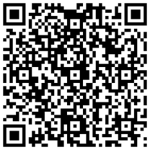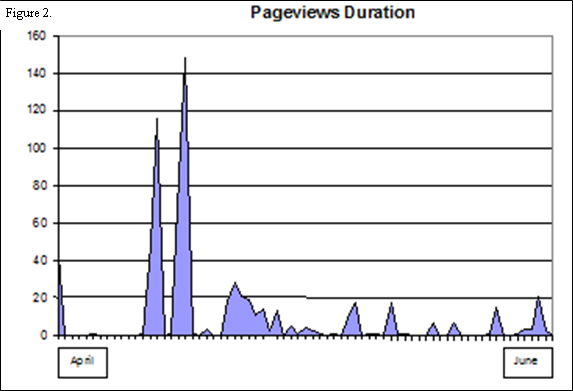


Theme
eLearning
INSTITUTION
Imperial NHS Trust

Healthcare professionals are charged with delivering high quality, safe and reliable care. To support this contemporaneous access to protocols, clinical policies, and evidence-based guidelines is essential. The use of smartphones could make such information more easily accessible, particularly given that one in three adults in the UK now uses a smartphone, with junior doctors even more likely to own such a device.
Though professional information is widely available access can be difficult at the required time and place. Clinical staff with smartphones could use QR (quick response) codes for contemporaneous access to relevant information, supporting good evidence based practice – the ‘Just In Time Learning’ (JIT-L) paradigm.
Just-in-Time
'Just-in-time' was first used within the Japanese motor industry but its application can be much more diverse. The approach utilises QR codes to ensure appropriate materials are provided when necessary, at the right time and place. This principle can be extended to JIT-L: allowing learners to access pertinent learning material at the precise moment of need. Having potential implications for relevance, interest, and retention for medical practitioners who are time poor and where up-to-date information is critical.
Aims
This study aimed to explore the feasibility and implications of providing context-sensitive learning material for clinical practitioners using QR codes.
Method
A list of high-yield clinical guidelines was generated through discussion with staff and obtaining a list of the most popular search terms used on the corporate intranet. Content was then adapted for smartphone viewing.
QR codes were generated for each topic (21 topics in total) and positioned around a medical ward.
A 'QR trainer' visited the ward once a week to assist staff accessing QR codes.
Website analytics and semi-structured interviews were performed to evaluate usage and educational value of QR codes to access educational materials.
⇒ A total of 17 participants were interviewed including student nurses, healthcare assistants, nurses and junior doctors.
⇒ Structured interviews were carried out, using availability sampling, over the course of 3 visits to the ward in a period of 7 days.
⇒ Interviews were recorded using smartphones, transcribed and a thematic analysis was carried out using the Atlas.TI software (v6). Key themes were identified, discussed and revised.
-
Healthcare staff use and value high-yield, contextually relevant clinical information.
-
Smartphone use is viewed as inappropriate within ward areas, despite being used for professional learning.
-
Smartphone can deliver educational resources, however an alternative method is needed to link the resource with the clinical situation to promote JIT-L. QR codes are a possible solution but worked poorly in practice.
Paul Phelan : IT support and project management, Digby Ingle: comments on full article
Quantitative data:
Large numbers of participants accessed the educational material and repeatedly but this was not sustained during the study [Fig 1].
Repeat visits can be seen as a marker that the user found the page useful. However a low ratio (suggesting multiple novel visits) can also be viewed positively in the JIT-L paradigm. It may be that each user only needed that information on one particular occasion, and successfully accessed it.
Figure 2 shows the frequency of Pageviews per day for all topic pages. 
The ’spikes’ in usage data suggest increased use when technical support was present on the ward or shortly afterwards, with visits tailing off afterwards. However the trainer only assisted a small number of people on each visit, suggesting that the visits prompted others to use the QR content, even if they hadn’t had training on that occasion.
Qualitative Data Key Themes:
Competence with IT
The majority of practitioners who took part in this project had little or no previous experience in using educational technology, although a few were already familiar with QR codes and became regular users of the content.
Feasibility of mobile learning
The introduction of QR codes in clinical practice meant that participants could access pertinent information at the point of need.
…. I would have to wait for a computer and we are not allowed to use the computers a lot, and this will be easy [participant 9].
However the culture of mobile phone use within a ward setting was a barrier:
I accessed it whilst in a treatment room because I didn’t feel that I could do it in front of patients … so I accessed it in private [participant 4].
Value of curated content
Junior staff seemed to see it as a more useful resource for both JIT-L and Just-in-case learning (JIC-L), keeping a ‘library’ of links. Some experienced practitioners felt the content was too simple and not applicable to their needs.
We have found evidence that providing such curated, high-impact information that relates directly to clinical practice is of value to learners. QR codes utilised for the 'just-in-time' approach can provide a link between the real world and the related information on the web or smartphone, however understanding of this is not implicit or automatic for many health professionals. Equipment, IT skills and routine behaviour patterns that would allow QR codes to be widely used are not currently prevalent on an NHS medical ward.
Ofcom. A nation addicted to smartphones. [Online] Available from: http://media.ofcom.org.uk/2011/08/04/a-nation-addicted-to-smartphones/
Morrow, A. and Lombardo, N. Using QR Codes in Education. [Online] Available from: http://prezi.com/pcgwsbxuaruw/using-qr-codes-in-education/
Vincent, C., Neale, G., & Woloshynowych, M. (2001). Adverse events in British hospitals: preliminary retrospective record review. BMJ (Clinical research ed.), 322(7285), 517–9.
 Send Email
Send Email